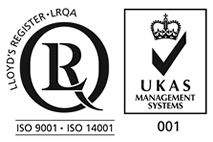
Main Products
Copyright 1998-2025 Firmetal Group All Rights Reserved. | Sitemap
As a phosphonic acid compound, The following can be listed: ethylenediamine iv (methylene phosphonic acid), diethylenetriamine V (methylene phosphonic acid), triethylenetetramine vi (methylene phosphonic acid), propanediamine IV (methylene phosphonic acid), tetraethylenepentamine V (methylene phosphonic acid), hexamethylenetetramine VIII (methylene phosphonic acid), bis (hexamethylenetriamine v) (methylene phosphonic acid), and 1-hydroxyethylene-1. 1-diphosphonic acid. Furthermore, some of the phosphonyl methyl groups present in these compounds can be replaced by other groups such as hydrogen atoms or methyl groups. The phosphonic acid groups of these phosphonic acid series compounds can be free acids, such as salts of ammonium salts, etc. Special preference is given to diethylenetriamine pentahydrate (methylene phosphonic acid), enediamine tetramine (methylene phosphonic acid), and 1-hydroxyethylenefor-1, 1-diphosphonic acid. Phosphonic acid series compounds have the effect of serving as stabilizers for hydrogen peroxide. The concentration in the etching solution is 0.001 to 0.1 by weight %, and 0.005 to 0.02 by weight % is preferred. If the weight is less than 0.001%, the effect as a stabilizer for hydrogen peroxide is insufficient. If it exceeds 0.1% by weight, tin or tin alloys will be etched, so it is not preferred.
The purpose of mixing ammonia is to adjust the pH of the etching solution. The pH of the etching solution of the present invention is preferably 7 to 9. Therefore, the dosage of ammonia is to adjust the pH of the aqueous solution containing hydrogen peroxide, phosphoric acid, and phosphonic acid series compounds to 7 to 9. If the pH is less than 7, the etching rate of titanium and titanium alloys will be insufficient. Additionally, if the pH exceeds 9, it will promote the decomposition of hydrogen peroxide, and copper and aluminum will be etched. Therefore, it is not preferred.
Etching solution can be prepared as follows: For instance, hydrogen peroxide, phosphoric acid, and phosphonic acid series compounds are added to water, stirred to obtain a water solution, and then ammonia water is added to adjust the pH of the water solution to 7 to 9.
The etching method of the present invention is carried out by making the etched object come into contact with the etching solution. There are no specific restrictions on the contact method. It can be carried out through impregnation treatment, spray treatment, etc. The preferred processing temperature is 30 to 60℃. Although a higher processing temperature can increase the etching speed of titanium and titanium alloys, if it exceeds 60℃, it will promote the decomposition of hydrogen peroxide. Therefore, it is not preferred. In addition, the etching processing time can be selected based on the surface condition and shape of the etched object to be chosen as the most suitable time. In practical applications, 1 to 10 minutes is preferred.